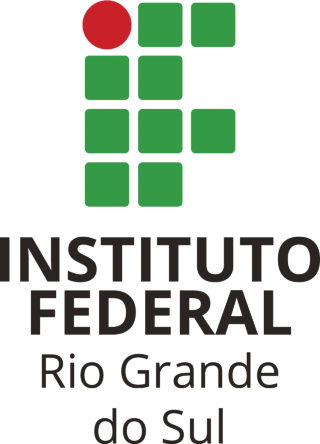| dc.description.abstract |
A soja (Glycine max) é uma das principais culturas produzidas a nível mundial. Com
a utilização de fungicidas podendo ser uma maneira de manter seu potencial
produtivo, não sendo inibido pela incidência de doenças. Desta forma, o objetivo
desse trabalho é determinar a severidade de doenças e a produtividade da cultura da
soja mediante diferentes manejos de fungicida em duas safras agrícolas. O ensaio um
(2022/2023) tem o objetivo de avaliar a especificidade das moléculas de fungicidas,
utilizando em parcelas isoladas, com princípios ativos compostos por piraclostrobina
+ epoxiconazol + fluxapiroxade, mefentrifuconazol + piraclostrobina + fluxapiroxade,
impirfluxam + tebuconazol, impirfluxam + proticonazol, bixafem + protioconazol +
trifloxistrobina, benzovindiflupir + protioconazol e picoxistrobina + protioconazol,
sendo chamados de T1, T2, T3, T4, T5, T6, T7 e T8 o tratamento testemunha,
respectivamente. O ensaio dois (2023/2024) tem por objetivo utilizar a rotação de
princípios ativos nos tratamentos, onde foram utilizados alguns fungicidas que não
obtiveram resultados satisfatórios no ensaio um, com manejo mais utilizado por
agricultores, com princípios ativos compostos por impirfluxam + proticonazol, bixafem
+ protioconazol + trifloxistrobina, tebuconazol + trifloxistrobina, ciproconazol +
trifloxistrobina e mancozebe, chamados de T1, T2, T3 e T4, respectivamente, mais o
T5 que é o tratamento testemunha. Os ensaios foram conduzidos na Área Agrícola do
IFRS - Campus Ibirubá, onde nos dois ensaios foram utilizados o delineamento de
blocos ao acaso, com quatro repetições. No ensaio um foi utilizado o cultivar NS 6162
IPRO e no ensaio dois o cultivar NEO 610 IPRO, avaliando em ambos a severidade
das doenças, o peso de mil sementes (PMS) e a produtividade. Foram obtidos e
submetidos ao teste de médias Scott-Knott, a 5% de probabilidade de erro pelo
software Sisvar, em que o ensaio um não houve diferença significativa entre os
tratamentos, contudo, a produtividade média obteve valor médio geral de 34,32 sc.ha-
1
, que variaram de 31,18 a 37,70 sc.ha-1e, PMS com sua média geral de 135,75
gramas, com variação de 132,48 a 138,80 gramas. Já no ensaio dois houve diferença
significativa entre os tratamentos relacionados a produtividade, com produtividade
média obtendo valores de 71,46; 73,88; 80,07; 89,02 e 56,65 sc.ha-1
, com PMS de
196,97; 193,95; 189,91; 184,72 e 157,23 gramas respectivamente para T1 à T5 do
ensaio dois, Salienta-se que durante o período conduzido o ensaio um apresentou
déficit hídrico, enquanto no período do ensaio dois as precipitações pluviométricas
foram ideais para a cultura. Por fim, os resultados de produtividade do ensaio um
obtiveram média de 34,32 sc.ha-1
, e, de 74,21 sc.ha-1 no ensaio dois, demonstrando
a variação de valores conforme os manejos adotados e às condições ambientais. |
pt_BR |
| dc.description.abstract |
Soybean (Glycine max) is one of the main crops produced worldwide. The use of
fungicides can be a way to maintain its productive potential, without being inhibited by
the incidence of diseases. Thus, the objective of this study is to determine the severity
of diseases and the productivity of soybean crops through different fungicide
management in two agricultural harvests. One Trial (2022/2023) aims to evaluate the
specificity of fungicide molecules, using in isolated plots, with active ingredients
composed of piraclostrobina + epoxiconazol + fluxapiroxade, mefentrifuconazol +
piraclostrobina + fluxapiroxade, impirfluxam + tebuconazol, impirfluxam + proticonazol,
bixafem + protioconazol + trifloxistrobina, benzovindiflupir + protioconazol e
picoxistrobina + protioconazol, being called T1, T2, T3, T4, T5, T6, T7 e T8 the control
treatment, respectively. Two Trial (2023/2024) aims to use the rotation of active
ingredients in the treatments, where some fungicides were used that did not obtain
satisfactory results in one trial, with management most used by farmers, with active
ingredients composed of impirfluxam + proticonazol, bixafem + protioconazol +
trifloxistrobina, tebuconazol + trifloxistrobina, ciproconazol + trifloxistrobina e
mancozebe, called T1, T2, T3 e T4 respectively, plus T5 which is the control treatment.
The trials were conducted in the Agricultural Area of IFRS - Ibirubá Campus, where in
both trials a randomized block design was used, with four replications. In one trial the
cultivar NS 6162 IPRO and in two trial, cultivar NEO 610 IPRO was used evaluating in
both the severity of the diseases, the weight of a thousand seeds (PMS) and the
productivity. They were obtained and subjected to the Scott-Knott test of means, at 5%
probability of error by the Sisvar software, in which in the first trial there was no
significant difference between the treatments, however, the average productivity
obtained an overall average value of 34.32 bags.ha-1
, which varied from 31.18 to 37.70
bags.ha-1 and, PMS with its overall average of 135.75 grams, with variation from
132.48 to 138.80 grams. In the second trial there was a significant difference between
the treatments related to productivity, with average productivity obtaining values of
71.46; 73.88; 80.07; 89.02 and 56.65 bags.ha-1
, with PMS of 196.97; 193.95; 189.91;
184.72 and 157.23 grams respectively for T1 to T5 of trial two. It should be noted that
during the period conducted, trial one presented a water deficit, while in the period of
trial two the rainfall was ideal for the crop. Finally, the productivity results of trial one
obtained an average of 34.32 bags.ha-1
, and 74.21 bags.ha-1 in trial two, demonstrating
the variation of values according to the management adopted and the environmental
conditions. |
en |



